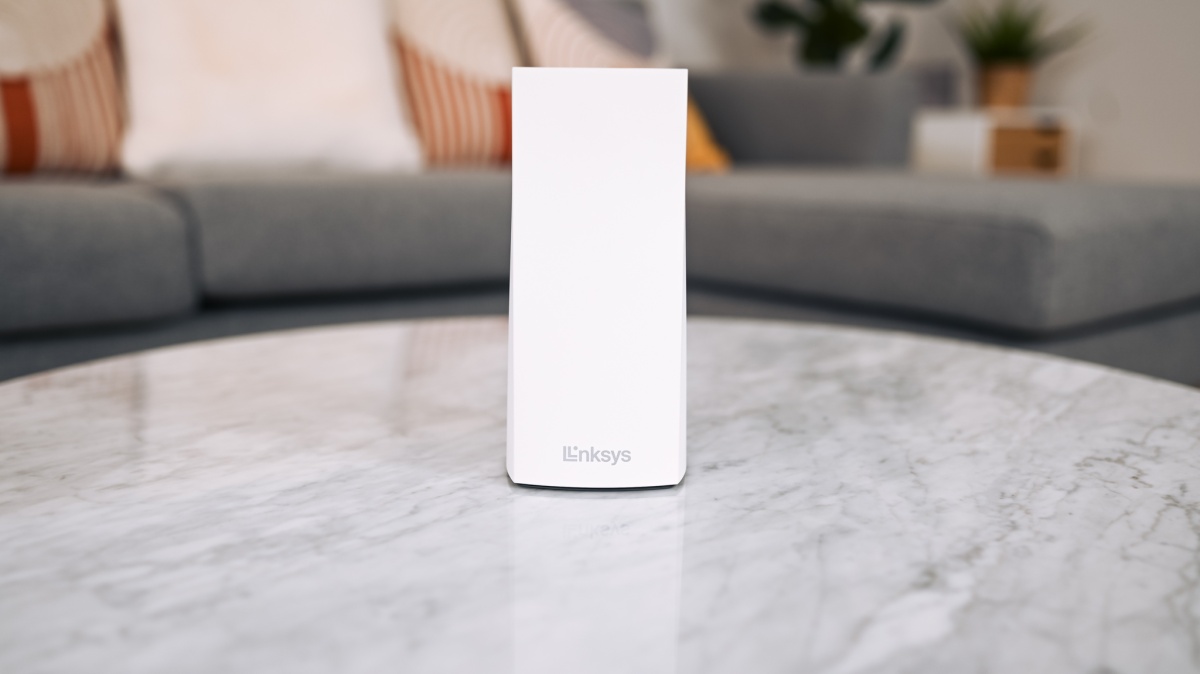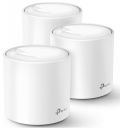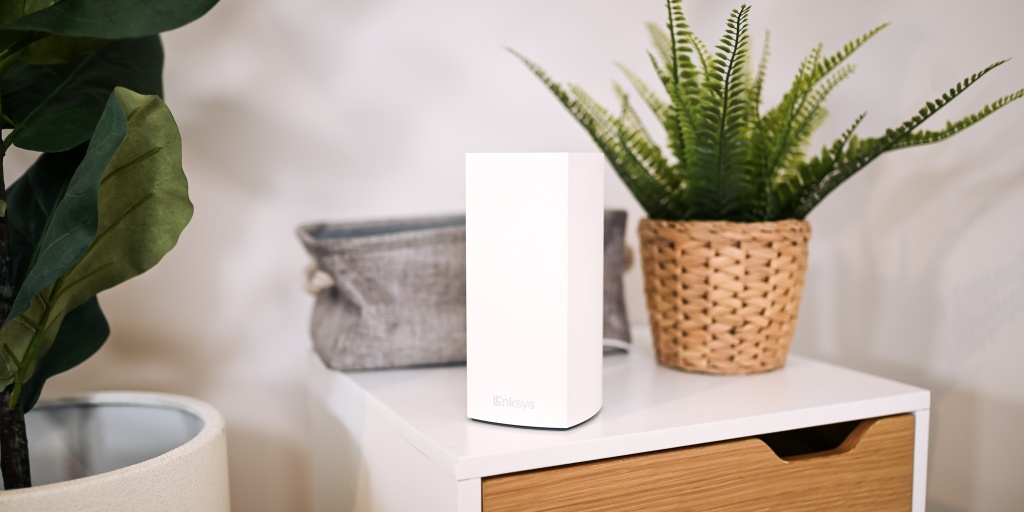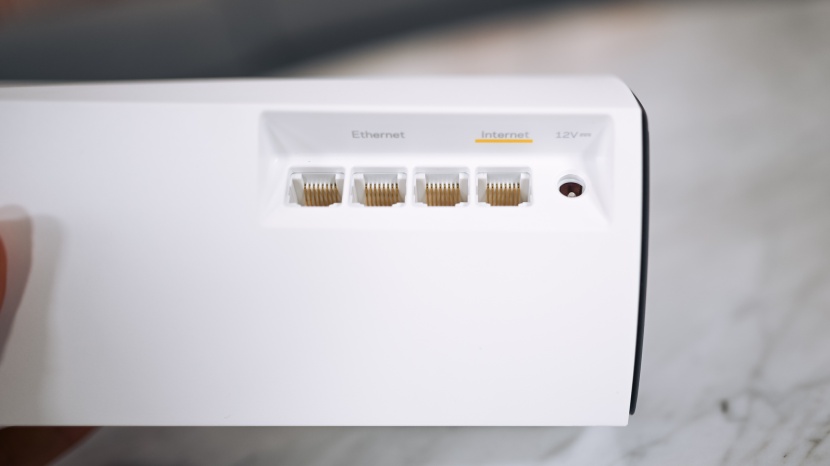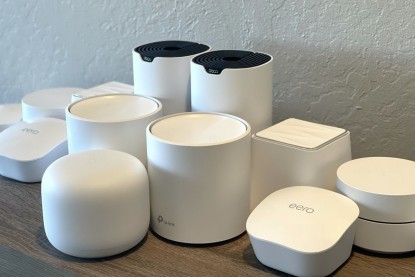Our Verdict
Compare to Similar Products
 This Product Linksys Atlas Pro 6 (MX5503) | |||||
|---|---|---|---|---|---|
| Awards | Best Coverage | Best Overall Mesh System | Best Bang for the Buck | Best Ease of Use | |
| Price | $450 List $170.99 at Amazon | $270 List $139.99 at Amazon | $338 List $99.99 at Amazon | $450 List $239.99 at Amazon | $170 List $129.99 at Amazon |
Overall Score  |
|||||
| Star Rating | |||||
| Bottom Line | A top-performing mesh router that looks great and comes with exceptional features | A top-performing WiFi mesh system with MU-MIMO, WiFi 6, and OFDMA | A budget-friendly mesh router that performs well and has great features | This pricey unit is worth the investment if you value top-notch parental controls | This middling router has good 2.4 GHz throughput for a low price point |
| Rating Categories | Linksys Atlas Pro 6... | TP-Link Deco X20 | Google Nest WiFi | ASUS ZenWiFi (XT8) | TP-Link Deco M5 |
| 2.4 GHz Throughput (35%) | |||||
| 5 GHz Throughput (35%) | |||||
| Range (20%) | |||||
| Ease of Use (10%) | |||||
| Specifications | Linksys Atlas Pro 6... | TP-Link Deco X20 | Google Nest WiFi | ASUS ZenWiFi (XT8) | TP-Link Deco M5 |
| Wi-Fi Version | WiFi 6 | WiFi 6 | WiFi 5 | WiFi 6 | WiFi 5 |
| Wireless Specification | Dual Band | Dual Band | Dual Band | Dual Band | Dual Band |
| Frequency | 5 GHz 2.4 GHz |
5 GHz 2.4 GHz |
5 GHz 2.4 GHz |
5 GHz 2.4 GHz |
5 GHz 2.4 GHz |
| Processor | 1.0 GHz dual-Core | 1.0 GHz Dual-Core | 1.4 GHz Quad-core 64-bit ARM | 1.5 GHz quad-core | Qualcomm 717 MHz Quad-core |
| Memory | 256 MB Flash 512MB RAM |
N/A | 4 GB Flash 1 GB RAM |
256 MB Flash 512 MB RAM |
N/A |
| MU-MIMO | Yes | Yes | Yes | Yes | Yes |
| OFDMA | Yes | Yes | No | Yes | No |
| Beamforming | Explicit only | Explicit only | Explicit only | Implicit Explicit |
Explicit only |
| Security | WPA/WPA2/WPA3 - Personal WPA/WPA2 - Enterprise |
WPA/WPA2/WPA3 - Personal WPA/WPA2 - Enterprise |
WPA/WPA2/WPA3 - Personal WPA/WPA2 - Enterprise |
WPA/WPA2 - Personal WPA/WPA2 - Enterprise |
WPA/WPA2 - Personal WPA/WPA2 - Enterprise |
| LAN Ports Available | 3 | 1 | 1 | 3 | 1 |
| USB Ports | None | None | None | 1 USB-A 3.0 |
None |
| Antenna | 5 - Internal | 2 - Internal | N/A | 6 - Internal | 4 - Internal |
| Wall Mountable | No | No | No | No | No |
| Wireless On/Off Button | No | No | No | No | No |
| LED On/Off | Yes | Yes | Yes | No | Yes |
Our Analysis and Test Results
The Linksys Atlas Pro 6 will deliver a fast and secure network throughout your entire home. It is equipped with MU-MIMO and OFDMA, giving you more connectivity for all your smart devices. The system has three WAN/LAN ports for connection to ethernet backhaul or hardwired devices. We appreciate the intuitive app with step-by-step instructions for setup. The user-friendly app also includes in-depth parental controls and QoS.
2.4 GHz Throughput
Naturally, homes are going to create dead zones where service drops or slows for a multitude of reasons. Mesh Systems work to eliminate these dead zones by overlaying the entire house with WiFi. To test the efficacy of these systems, we assessed the 2.4 GHz throughput in three different locations: nine feet, 35 feet, and 70 feet. Additionally, we made sure to test these with obstructed paths to resemble what the speeds would look like in a home where walls are likely to block your WiFi connection. The Linksys Atlas Pro 6 did about average in this test.
The Atlas Pro overall scored about average. Nine feet away from the router, the system was transmitting about 105 megabits per second (Mbps). However, when this nine-foot path was obstructed, the service fell dramatically to 76 Mbps. The speeds stayed about the same throughout the 35-foot test. Though the service seemed to drop substantially at the nine-foot obstruction point, this mesh system scored one of our highest speeds at the 70-foot obstruction point, with speeds of 21 Mbps.
5 GHz Throughput
For the most part, our 5 GHz throughput test was the same as the 2.4 GHz test. The only difference was that we measured the throughput speeds in the 5 GHz channels. We started nine feet from the router, taking an average of three speeds. We then obstructed the nine-foot path with a wall. We did this same process at 35 feet. At 70 feet, we tested the obstructed path (only as most homes don't have rooms that are 70 feet long).
The Atlas Pro did exceedingly well in this metric, putting it toward the front of our test lineup. We noticed a drop-off in service at the nine-foot obstructed mark, just like in the 2.4GHz test. However, the remainder of the locations showed exceptional speeds. At nine feet unobstructed, the Linksys Atlas Pro 6 led the pack with speeds of 398 Mbps. This dropped to 309 Mbps when obstructed at nine feet. The speeds then jumped back up to the 350s at the 35-foot mark. We were impressed by the throughput at 70 feet. A whopping speed of 118 Mbps was recorded using this router, whereas most others struggled to reach 50 Mbps.
Range
To test the range of each mesh system, we watched the same YouTube video on 1080p. In 10-foot increments, we moved away from the router to see when the video started to buffer. We did this using both the 2.4 and 5 GHz channels.
This mesh system led the assembly in this metric with an exceptional range on both 2.4 and 5 GHz bands. On the 2.4 GHz band, our video started buffering when we hit 100 feet. On the 5 GHz channel, it took 160 feet before the video started to buffer. This range is superb and might be ideal for someone with a large backyard who wants to stay connected.
Ease of Use
For the ease of use metric, we assessed how simple the setup process was. We inspected the accompanying mobile application for user-friendliness. Additionally, we assessed the advanced features like parental controls, QoS, and WiFi settings. The Linksys Atlas Pro 6 has a very easy setup process. Simply download the app and follow the step-by-step instructions for setup. This process was very intuitive and was one of the fastest setup times we encountered. Unfortunately, the only way to set up this mesh system is through the mobile application. No computer setup is available.
The app itself is easy to navigate. All functions are well-labeled with the most common features on the main page. Among those are parental controls, WiFi settings, and QoS. The parental controls include options to restrict access, schedule time away, and block specific sites. The user can easily create family member profiles to have unique settings for specific individuals. The WiFi settings include guest access, 24/7 remote access, internet scheduling, and router management. With router management, you'll be able to move the router around to find the perfect location.
Quality of Service (QoS) is a feature that many routers are beginning to include. However, some QoS options are more advanced than others. We were impressed with this system's options for device prioritization. The Atlas Pro 6 allows three devices to be prioritized. During this time, these devices will receive more bandwidth. This is ideal for streaming, gaming, or working from home.
Should You Buy the Linksys Atlas Pro 6?
The Linksys Atlas Pro 6 is a superb WiFi mesh system. It has all the latest features like WiFi 6, MU-MIMO, and OFDMA. We were impressed by the performance of this system with its exceptional range and throughput. The mobile app is very easy to use, with great features like parental controls and QoS. However, this system is quite expensive. We struggled to find anything wrong with this product, so if you are willing to shell out the extra cash, this device will serve you well.
What Other WiFi Mesh System Should You Consider?
Another fantastic option that won't break the bank is the TP-Link Deco x20 mesh system. This unit delivered high-speed connectivity and did well in all of our tests. The Deco X2o is equipped with WiFi 6, MU-MIMO, and OFDMA. While the QoS isn't as great as the Atlas Pro, we still think this system is worth checking out. Another budget option is the Google Nest WiFi. This is a great option for those who already have smart homes with Google products and want parental controls on their device.


